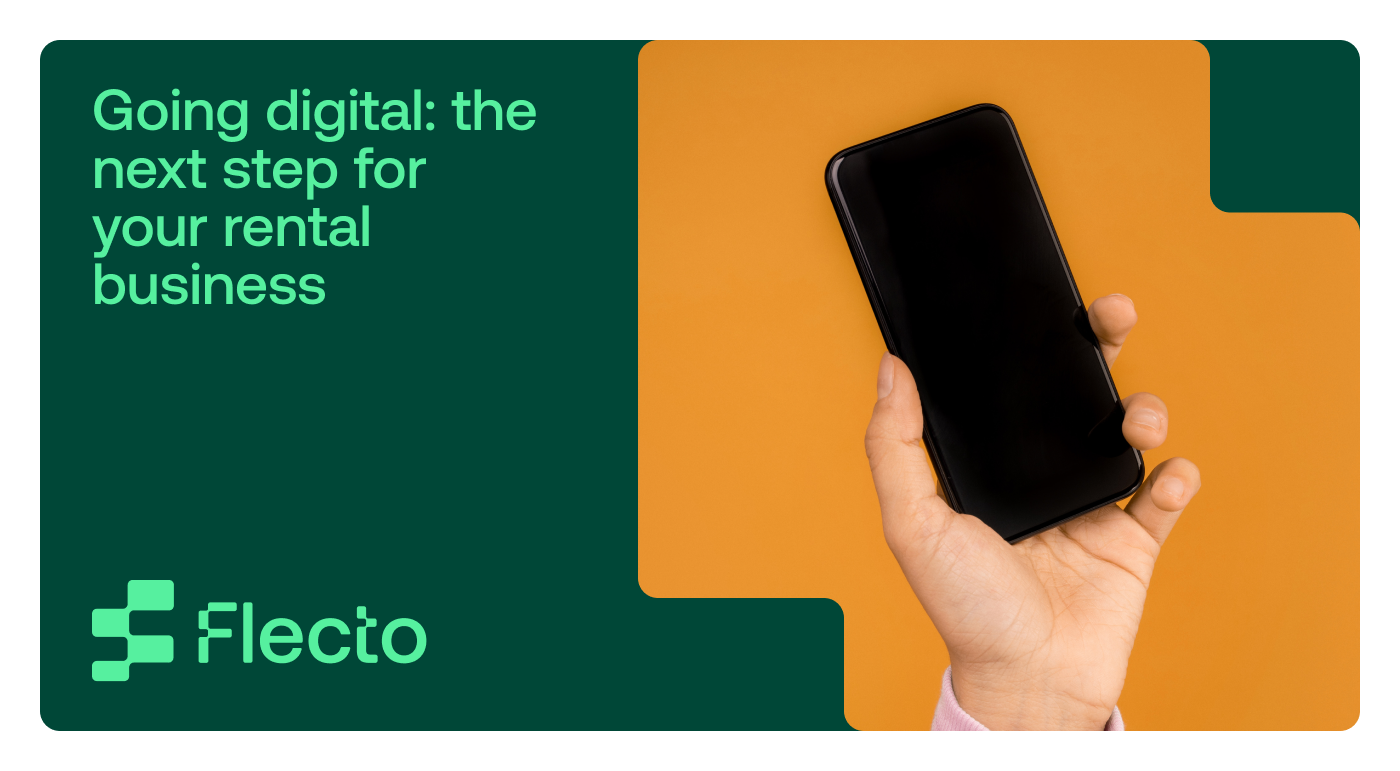5-step guide to migrate your rental business online

In recent years, digitalization has become the key strategy for businesses to adapt to a new generation of consumers that favor easy, simple access to goods and services. Especially after the coronavirus outbreak, where physical locations were temporarily ou permanently shut down, companies sought out a digital way of doing business in order to survive.
Rental businesses are no exception. While juggling different tools and witnessing the demand for rental items increase in recent years, owners realized that going digital was not only a step towards business continuity but also a way of providing increased flexibility to the user, creating a smoother experience for both renter and tenant.
Migrating your rental model to the web is not as complicated as it sounds and will bring outstanding benefits for both your business and your community. Make sure your transition is as effortless as possible by going through the following steps.
1. Understand the why
There’s a lot that can be said about how rental businesses are part of a more circular and sustainable economy, as they favor the rotation of products in order to extend their life cycle and reduces the need for non-reusable resources. But surely you know all about that already. Migrating your business online brings a whole new set of benefits. Digital tools bring automation and flexibility to all your business essentials, creating a smoother experience for both yourself and your customers. Additionally, it is predicted that by by 2026, 99.6% of Gen Zers will be regular internet users, which means that by going digital you will also have the chance to reach an entire new generation of consumers. Pair that with the fact that recent generations pay larger attention to sustainability-driven consumption, and you will definitely be on the right path!
2. Go through your inventory
This one sounds obvious but should definitely not be discredited. Take a careful look at what items you have available within your business and would make sense to continue leasing moving forward — these can go all the way from technical equipment to kitchen supplies or even transportation. Next step would be to define the details for each rental: how long can someone rent an item for? How much does it cost? Do prices differ according to time range and seasonality? These are all questions you should think about. However, values can be adjusted at any given time, so don’t worry too much if you’re doing it right at first. If your business is focused on a specific industry (e.g. audiovisual equipment), you can check out how similar companies operate their prices models and start from there.
3. Get the best of both worlds
It’s important to understand that your online and offline businesses can coexist smoothly. According to Statista, 67% of consumers prefer making bookings online due to time saving, while 54% feel that they can find larger and better options online. Though you’ll be managing all operations digitally, there is still a physical component where customers have to either pick up or receive the rented item. Therefore, you should consider important customer flows such as: how to include transportation and delivery in your online operation; how to integrate buffer time between rentals in your online schedule; how to redirect customers to the right address, if necessary. Online and offline can complement each other perfectly as long as they are mapped out strategically and keep and smooth experience for the customer in mind.
4. Think about your new necessities
There are quite a few business needs that come with leasing products and this is probably a good time to take a look at them. In the old days, you were probably using different methods to manage operations such as insurance, payments, compliance and ID verification. All of these will have to be equally migrated online. What kind of insurance of you want for your items? Will you be the one taking care of it? How can you provide a strong verification method that protects the data of both your customers and your business? Though this process might seem complex at first, digital tools are proofed to handle all matters that were usually managed offline, so you don’t have to worry about a thing.
5. Find the perfect platform
Migrating your business online doesn’t mean you have to do everything by yourself — on the contrary. A number of platforms are designed to unlock rental operations and provide business owners with as much flexibility as possible. Your platform of choice should not only handle your business essentials (e.g. payments, insurance, others) but mostly provide you with an online channel designed to increase both sales revenue and customer engagement. Going digital is all about taking your business to the next level.
Any transformation can be frightening at first but will always result in exceptional benefits over time. Migrating your business online will be an effective way to reduce in-person contacts, allowing you and your tenants to decide the how and when of any transaction. Furthermore, it is an extremely eco-friendly solution that will dismantle your business from physical locations or unnecessary resources. The new era of your rental operations starts now.